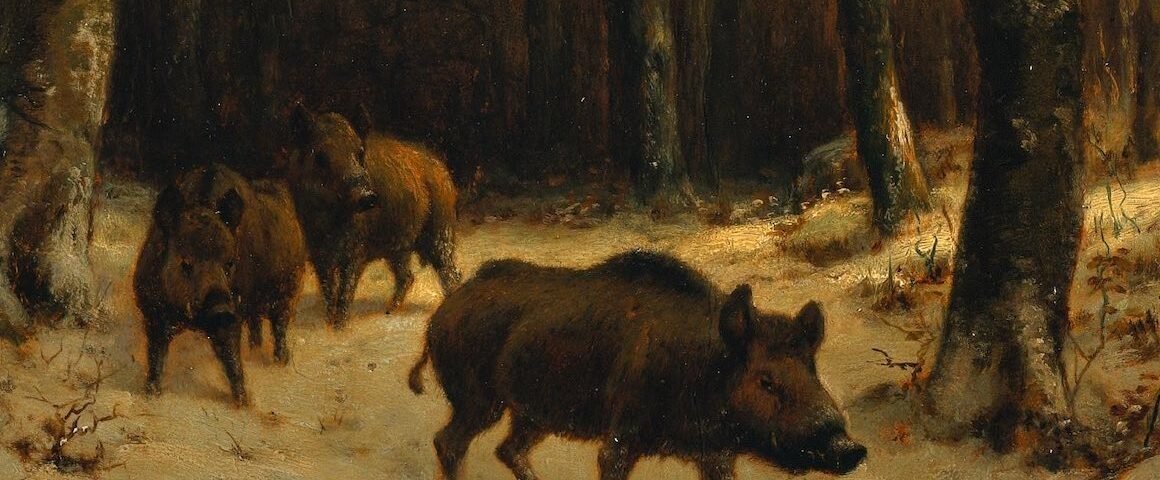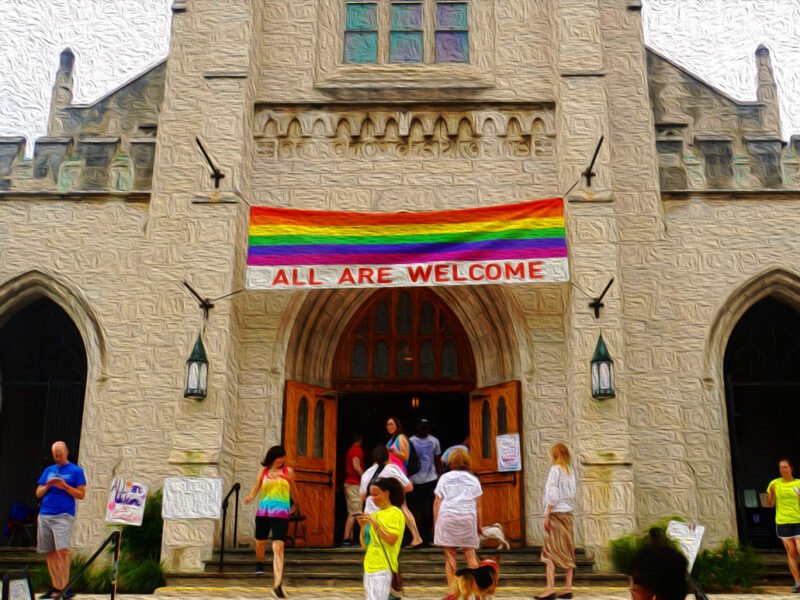A friend has wisely stated at various times: “All churches and denominations have their warts, the question is which ones are you willing to live with?” This quote has stayed with me for many years as an evangelical and an Anglican. It has stayed with me because I have found it to be true and truer than I’d like to admit.
On the surface, Anglicanism promises Catholic identity but a deeper look reveals some warts. There are some attempts to reunify, which I will briefly list below. Finally, I will suggest some things we need to do going forward. These warts render unity a bit of a challenge, but they also provide opportunities for growth.
The Draw of Anglicanism
Anglican warts are evident to anyone familiar with her recent history and the various sects presently in existence. This has become more evident to me as I have explored the many facets, groups, splinterings, and branches of Anglicanism. I recall even early on saying something to myself like: “Gosh, these Anglicans are starting to look more and more like the Baptists.” I certainly didn’t expect it. What originally attracted me to Anglicanism was two-fold: (1) authority in and through the ecclesiastical structures, formularies, and, at a minimum, a modest sort of creedalism, and (2) liturgy through the Book of Common Prayer (particularly the 1928 version as well as the earlier versions of the BCP). But, really, the gateway was through the liturgy and becoming more acquainted with the prayer-book lifestyle. These have and continue to ground me as more mainline Christian groups and evangelicals seem to be changing, and, in some ways, changing rapidly.
A Discovery of Warts
But, as with all groups, denominations, and churches, there are warts. Unfortunately, they often take time to reveal themselves as, even in our Anglican groups, there is always the same old universal tendency to put on our best face and our best smile. It turns out Anglicanism has some warts you wouldn’t quite expect. It too has its share of personality cults and leaders that dominate the leadership, especially in those large corridors of Anglicanism that embrace an evangelical ethos and outlook. I’m not claiming that the personality cultic nature of various evangelical groups permeates Anglicanism to the same degree, however. This was one secondary attraction to Anglicanism early on. It too has its share of authoritarianism, especially in those smaller idiosyncratic crevices of Anglicanism. I am also not claiming that Anglicanism has a greater share of authoritarianism than say other evangelical groups (e.g., the Baptists, etc) all of which have a tendency to territory control motivated by political agendas, or just a simple desire for individual power. Upon reflection, this is all to be expected to some degree. What I didn’t expect, what is and remains perplexing is the ‘unity’ bit that we confess every week as we confess the words of the Nicene Creed.
Anglican Unity: Illusion of Reality?
At least in Roman Catholicism, you have three clear ways in which unity stands out and serves as a mechanism for change: (1) Catechism unifies the doctrinal content as the standard for all Roman Catholics, (2) magisterial hierarchy, and (3) continuity and recognition of sacramental orders. Of course Anglicans who adhere to the formularies (or some part of them) have the equivalent to the Roman Catholic Catechism. The continuity and recognition of sacramental orders, too, are present theoretically, but upon closer inspection reveal a series of not insignificant questions threatening to undermine this essential feature of Anglican identity.
On the positive side, the growing attraction to Anglicanism for many low-church evangelicals is a sense that they really are a part of a united Church, the Church Catholic, and this is more than some abstract unity that we merely verbalize or some ephemeral sentimental notion that we grasp for but can’t quite reach. No, there is a sense that we are united, truly, globally, historically, and, in some real way, concretely. By globally and historically, I intend to convey (and I’m certainly not alone here) that there exist concrete structures that tie us to what literally everyone else is doing in a global sense and what the Anglican Church has always done in following, basically, the same old rhythmic patterns of liturgy found in the historic prayer books. Furthermore, there is, arguably, a concrete sacramental order that is passed on in a three-fold office that we claim as institutionally catholic in a real sense and one that ties us back to the early part of the English church’s history (at least to the second century, that common narrative about King Henry, well, the best of history doesn’t support that as the start of the Anglican English churches who had a three-fold structure of Bishop, priest, and deacon).
Division Over Holy Orders
All there is to say of a positive nature from history or from Scripture about our ‘concrete’ unity somehow comes into question, or becomes eroded, by actual honest looks at the landscape in recent history. There are several concerns just from recent history that, at most, serve as defeaters to the notion that we are, in fact, “united” and, more modestly, are simply perplexing. One of the areas of fracturing that undermines a sense that there is a real order that has been passed down and serves as a concrete unifier amongst Anglicans is in the area of ‘orders’—that is holy orders, those vocational offices for which deacons, priests, and Bishops enter the ‘one militant Church,’ the Church Catholic.
ACNA’s Attempt at Unity
This has become clearer to me and others after not only years of observation but of personal experience with differing Anglican groups. What is a surprise is that in Anglicanism you seem to have as much splintering or fracturing as you do in the Baptist world. You have your low-church evangelical Anglicans who have got the ‘liturgy’ bug. You have the rigid ‘confessionalist’ Anglicans who are simply Presbyterian adjacent. You have the even more rigid Lutheran-adjacent Anglicans. Then you have ACNA trying to unify varying trends and tastes as the new TEC. However, ACNA has a fair share of political challenges that stand out even amongst many of the Anglican/episcopal groups (the recent canceling of Fr. Calvin Robinson at Mere Anglicanism is just one symptom of a bigger structural concern permeating the halls of ACNA). You have the ACNA as the North American standard, but they are not connected to significant portions of global Anglicanism. Then you have those who lack confidence in ACNA (because, well let’s be honest, they are quite messy and politically poised to be ‘the’ Anglican standard in North America—but really they are bigger than the britches they own) and are moving in one of two directions. One direction is to go back to TEC to reclaim that historic sect (heard of reconquista?). The other direction is to move into one of the continuing episcopal groups—you know, the ones that made the wise decision to leave TEC when they saw Women’s ordination and prayerbook revisionism. Both solutions represent fracturing in their own ways.
Reconquista or Continuing Anglicanism?
Reconquista represents a fracturing with no plausible means or methods in sight to reclaim TEC. Ironically, there remain some relative traditionalists who are orthodox in TEC, but they have no clear plans for reclaiming TEC and taking it back in an orthodox direction. The priests are just happy and content to focus on their isolated congregations. If you ask them about plans, they will mumble something about being more congregationalist in outlook (ironic given they are Episcopal) with a dim view of future prospects that TEC will ever reaffirm even normative, Christological doctrine codified in Chalcedon. In fact, the days of individual TEC parishes withholding money from their unfaithful diocese seem to be steadily becoming a thing of the past. What that means, concretely, is that, yes, your money will go to unfaithful Bishops who are promulgating heterodox teaching, encouraging progressives to enter the priesthood, and dogmatically standing by the ‘79 prayer book whilst treating those who wish to retrieve the older more faithful prayerbook tradition as outcasts. And, if you are traditional and orthodox: good luck gaining support, encouragement, and real direction within TEC (in fact several cases reveal quite the opposite). Those who have legitimate orders recognized by global Anglicanism will have a challenge, as well, trying to serve (even as a visiting priest) in TEC if you affirm traditional orthodox doctrines held dear by historic Anglicanism.
Continuing Anglicanism represents a different type of fracturing. These “continuing” Episcopalians may be more faithful in terms of rigid creedal adherence and practice, but they (like the ACNA) have given up history, institutional backing, beautiful buildings, and any semblance of a connection to the wider world of global Anglicanism. More importantly, their orders are not recognized by much of the rest of global Anglicanism. These groups know that and, well, they don’t accept the orders of many other groups either. In fact, even amongst those who are considered relatively traditional and orthodox, even conservative, will likely need to ‘regularize’ their orders upon entering one of these rather small anemic Episcopal groups.
More Challenges to Unity
ACNA isn’t immune to this either, as it has effectively broken with a long heritage of hierarchy that served to unify the various brands of anglicanism. While ACNA’s orders are not recognized by many global Anglicans, they too have no recognizable standard for adjudicating the orders of other Anglican groups not to mention the more fundamental concern with women’s ordination, once again.
Then there are those charismatic Anglicans. Who knows what they are doing? I don’t intend that as a negative criticism of charismatic theology and practice in general, but just to highlight the fuzzy identity boundaries in Anglicanism that fail to map onto anything that resembles a continuous institutional, concrete sacramental Church and thus averting the ‘congregationalism’ of free-church movements.
Now that I’ve managed to piss off all the groups by pointing out only some of the warts they bear, I highlight this point of ‘unity’ that is uniquely captured in one of the key distinctive features of Anglicanism, namely holy orders. All this raises a more fundamental and serious question about Anglican orders in general, namely if there are generally recognized standards that are commensurate with historic Anglicanism. Beyond a mere alignment with this or that church’s doctrinal stances and moral standards (as well as following the ‘Ordinal’ in the historic prayer-book tradition), the arbitrary nature of orders resembles more and more the arbitrary and fluctuating standards of ‘congregationalist’ churches and erodes the continuous, catholic identity that we long for as Anglicans.
The Pluralistic Model of Anglican Polity
So, where does this leave us? What do we do now and where do we go from here? Well, this could leave us in a few different places. What we are describing regarding ‘unity’ really does impinge, in part, on how we can conceive of ‘identity.’ Again apostolic succession, the three-fold office, appears to be an essential ingredient of what sets Anglicans apart from other Protestants and evangelicals.
We could take it that the three-fold office is a distinctive of Anglicans (and other high-church Christians) who believe the three-fold office is supported in Scripture and provides a general organizational structure for the health and flourishing of the Church. That said, we are left with many who remain disagreed on the standards, conditions, and requirements for receiving holy orders. In fact, we have many ‘independent’ Anglicans out there who have a Bishop who operates as the head over a small number of parishes disconnected from other geographical locales, national Anglicalnism, and the global communion.
We could simply take this as a given and realize that there are a plurality of standards, conditions and requirements for the postulant entering holy orders. With that comes the unity around the rather thin idea that there actually is a three-fold office established by God in Christ and passed along from the Apostles. But, this leaves us in a rather precarious position concerning a richer more complicated unity of the actual branches within Anglicanism. Not only do we have three branches now (recognized respectively in higher church traditions: Anglican, EO, and RC), but we also have numerous branches that are not in communion and fail to recognize the orders of other branches. Call this the pluralistic model of Anglican polity. But it seems problematic given the fact that we share the same Anglicanism and we claim to be a part of the one Catholic Church we confess on a weekly basis (if you are one of those lonely Anglican parishes who does not confess the Nicene or Apostles Creed, then we have another sign of further fracturing and splintering). This pluralistic model leaves us a bit unsatisfied given the claim of some sort of concrete unity that takes us beyond an invisible church (as is so common in the Calvinian tradition) and an eschatological unity (so characteristic of Baptist and free church models). No, it seems we want something more that reflects a historic unity and a global unity in the concrete present Anglican Church.
Recent Strides for Unity
There have been attempts to codify the standards, conditions, and requirements of holy orders as governed by a global set of canons. More recently, these include the Worldwide Anglican Church (see here: https://www.worldwideanglicanchurch.org/wp-content/uploads/2022/11/WAC-Approved-Canons-2022.pdf). The Worldwide Anglican Church spells out the principle authority of unity for Anglican churches as the 39 articles and recognizes the unity as a bridge between Protestantism and Roman Catholicism. However, it merely takes the unity to extend backwards to King Henry the VIII. Then there exists the Anglican Communion (see here: https://www.anglicancommunion.org/media/124862/AC-Principles-of-Canon-Law.pdf). Of course, then we have the GAFCON and GSFA that were established to provide a kind of network for Anglicans in the process of reforming and renovating a more global Anglicanism. Worthy endeavors indeed, but the actual practice of how groups work together and the respective parishes work together on the ground concerning the respecting of holy orders seems altogether, once again, fractured.
A Fracturing Tendency
All this fracturing or “branching” as you might call it reflects a problematic tendency in our world that looks less like Catholicity historically and globally. As well, it reflects the broader tendency to treat somewhat loosely the Formularies, especially the prayer-book tradition that has always unified the respective Anglican locales across time. Presently, it also reflects a tendency amongst Bishops to act in ways that are inconsistent with the authorities they have been given that ought to govern their judgments and interactions with other Anglican groups and orders. That said, the reunifying, if that word is appropriate, through the varying networks is a helpful one that should continue even more to greater lengths. But, this will require spelling out not only the minimum conditions (for this one can follow the form, content, and rubrics given to us in the prayer books) for holy orders within the groups’ respective parishes, but also laying out clear parameters for which Bishops should operate as they relate and interact with other groups who happen to be in the same networks.
In the end, these challenges surrounding unity and holy orders are complex. The need for a nuanced definition of Anglican identity is evident. And, greater attention is necessary in the areas of Bishop’s interactions, codification of standards regarding diocesan relations, and global networks. This, then, is a call to a unified effort to address the warts of Anglican identity, so that we might foster a more continuous and cohesive identity in Catholic Anglicanism.







'Anglican Identity in Unity? Challenges and Opportunities' has 1 comment
February 28, 2024 @ 10:18 pm Ralph Webb
Yes, there are orthodox Christians in TEC. The reason why they generally are not working to change the denomination is simple: They simply don’t have the numbers to influence e church politics and effect change. It was difficult enough for orthodox Episcopalians to work for that in the latter part of the last century and the very early part of this century, even during a time when the number of orthodox Episcopalians were growing. That inability to change the denomination led to departures and the eventual formation of the ACNA. The numbers just aren’t there at this time to initiate change in TEC. Perhaps in God’s providence there one day will be enough, but that time is not now. Given that reality and the fact that orthodox congregations are mostly scattered across TEC (save for in a few dioceses that have a larger number of orthodox congregations), the current congregational focus is understandable.